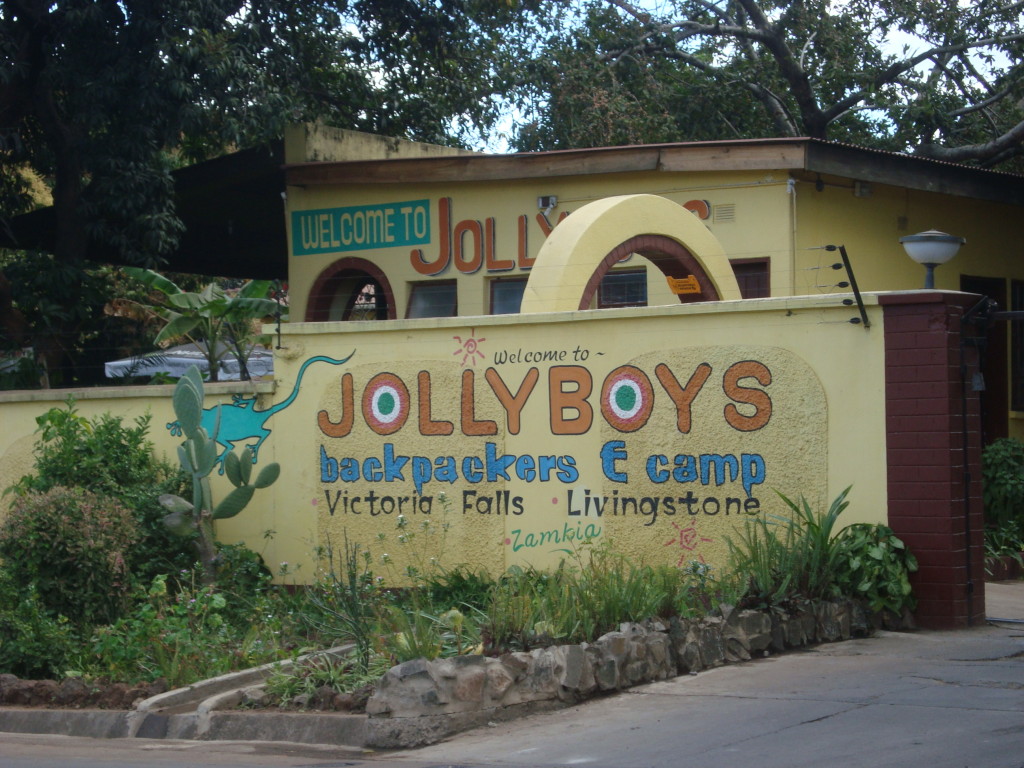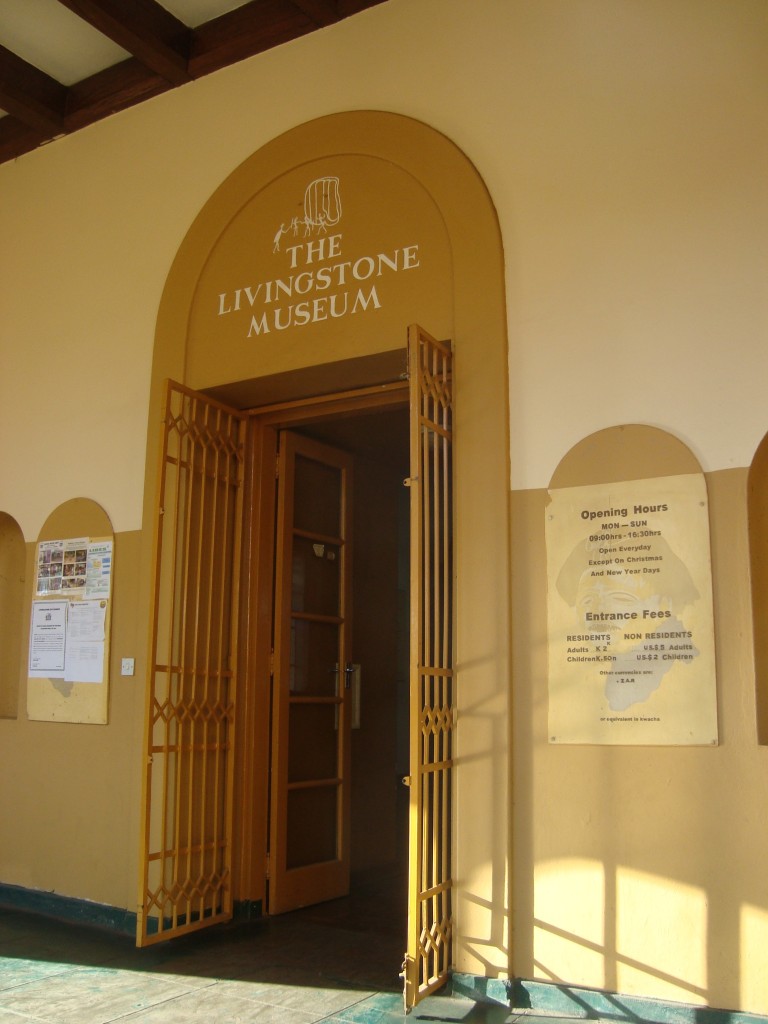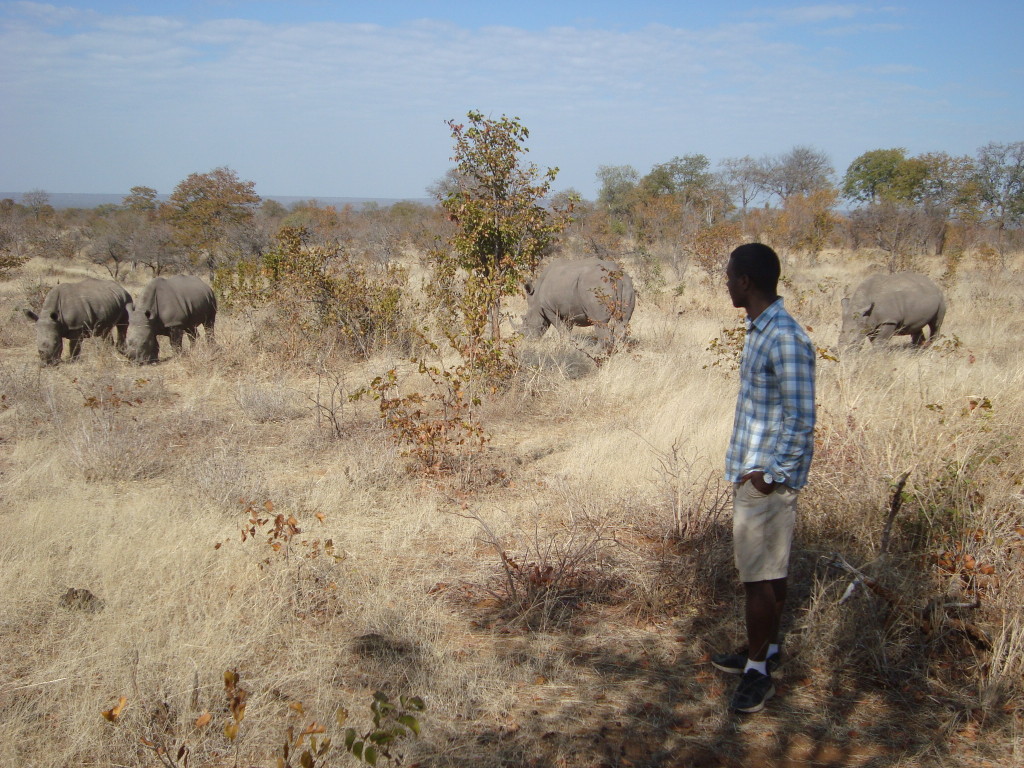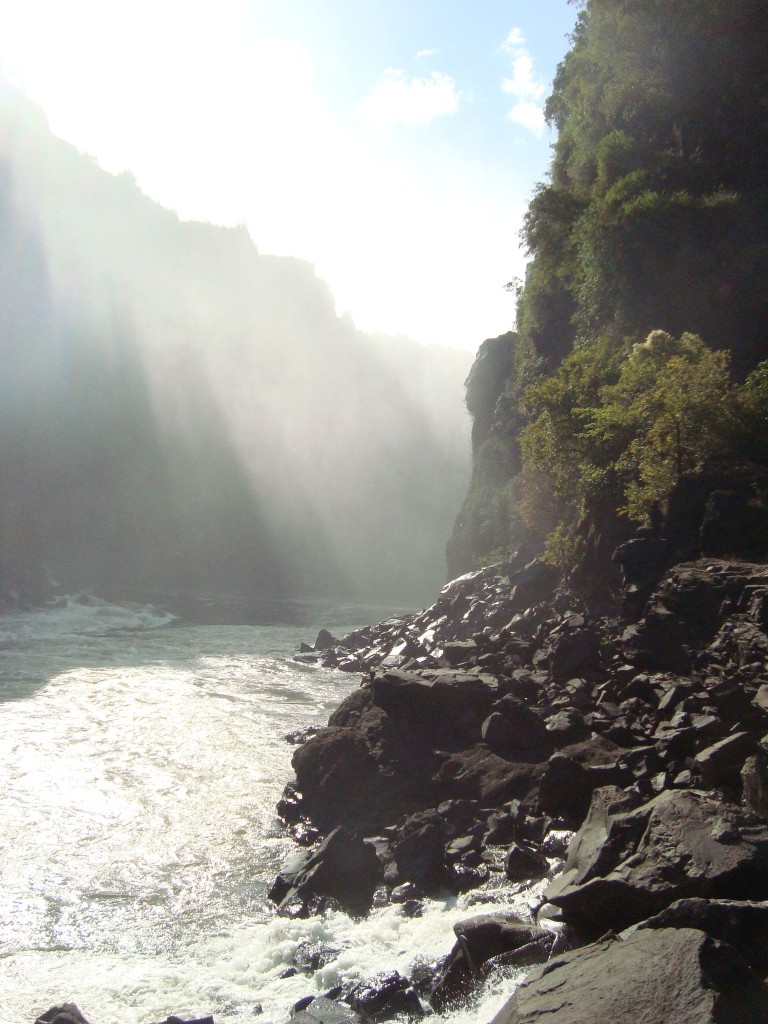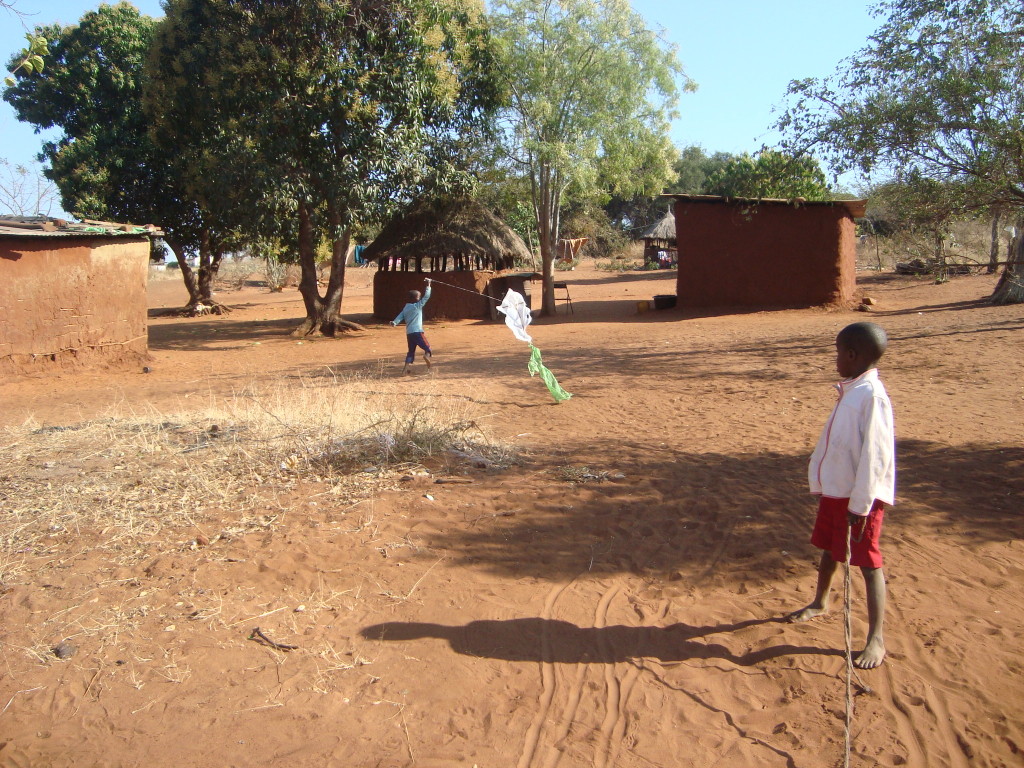After a few weeks at my internship in Lusaka, Zambia I decided to venture to Livingstone, the country’s tourism capital and home to the Victoria Falls. My local friends recommended Mazhandu Family Bus Services. I took the 6 AM bus so I could experience at least a half-day when I arrived in Livingstone. Despite the early hours, the Intercity Bus Station was bustling. There were barbershops, fruit stands, shwarmas, lotions and biscuits, but I was out of luck looking for a chocolate bar. Using the restroom before coming to the station is an important things to do because public restrooms at each bus station along the route are about two kwacha.
Jollyboys Backpackers and Camp
My destination and home for the next two days was Jollyboys Backpackers and Camp. It was my first time backpacking and I was unsure of what to expect. Backpacking is for travelers who will not be in town long, need a safe spot to stay and are not worried about luxury. But don’t be fooled, Jollyboys provides Wi-Fi, a pool, relaxing spaces with couches and a small bar and restaurant to chill after a long day of exploring. Make sure to bring your passport to check-in! Some activities around Livingstone, which is on the border of Zimbabwe, will require a passport.
The Livingstone Museum
The first place I visited was the Livingstone Museum, which is the oldest and largest museum in Zambia. Weaving through its halls reveals a unique history of an African country with modest fame. Black and white panoramas of the not-to-distant past detail the Zambian freedom struggle. Vivid exhibits with news clippings and relics of the 1960s and earlier color the experience. I felt chills eyeing the short batons used by officers in clashes with Africans and looking at the motorbike once ridden by Zambia’s first president, Kenneth Kaunda, during campaigns for independence.
My favorite exhibit, however, was the ethnography gallery that puts a visitor into a real-life setting. The floor of the exhibit area is sand. Look around and you see the statues of huts and villagers more prevalent in an older time before you walking into the modern era with urban buildings and buses. The exhibit is bittersweet. Descriptions by the exhibits tell of the depletion of natural resources that come with urbanization.
Safari in Mosi-Oa-Tunya National Park
Morning one: It’s 7:00 AM in Livingstone and I am heading to my first safari. My memories of enviously watching Steve Irwin in my youth rush to me like the wind rushes through the open-air jeep in which we are traveling.
Our safari begins a bit slow with much discussion of poop and the tracks of animals that were once there but obviously are not anymore. I turn off my camera.
My patience would eventually be rewarded however. A half-hour into the safari we see glimpses of distant zebra, elephants and impossibly shy warthogs. The real fun came later, when we saw a small group of white rhinoceroses. It was my favorite part of the safari.
The safari guides had a habit of rushing us through the scenery, so I lagged behind the rest of our group, stopped and absorbed my surroundings. There was an incredible calm in the silence. I could see miles away from where I was, where the sky kissed the ground. A feeling crept over me, a beautiful recognition that I am in Africa.
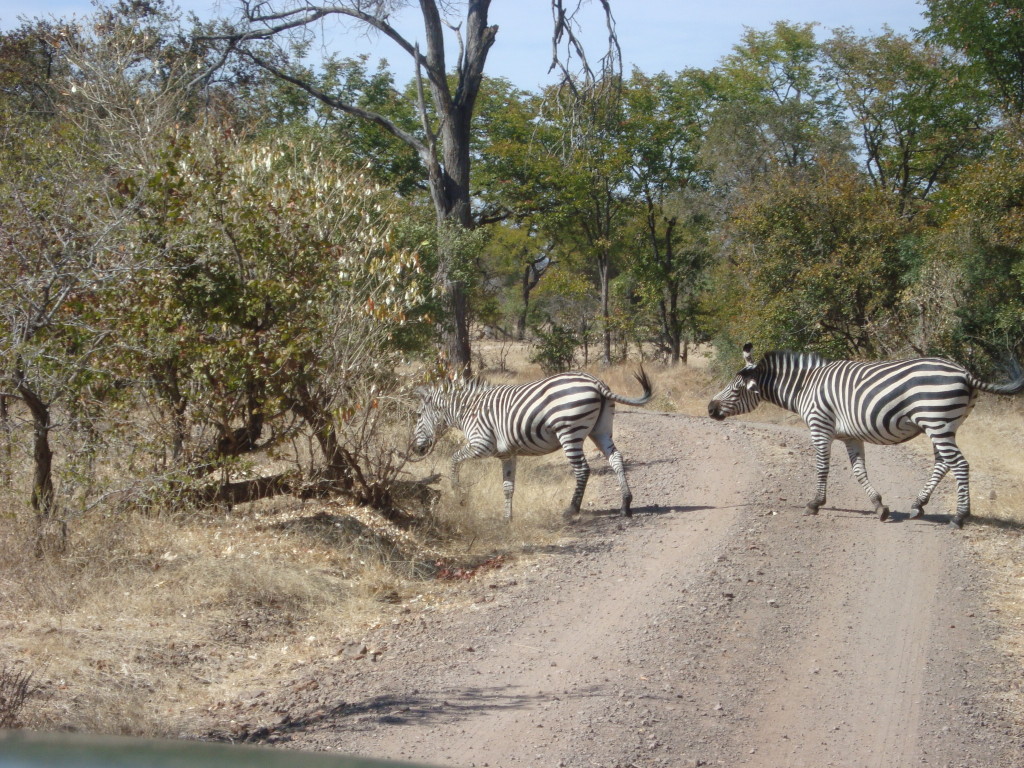
Victoria Falls
After the Safari, I headed to the celestial Victoria Falls. I recommend when visiting that you see the falls first, exploring every soaking corner. There is bridge you can cross where a cloud of mist engulfs all who pass. From there you should journey down to the Boiling Pot. The descent to the bed of the Falls will allow you to dry off before leaving. In the past, local tribes did not visit the Falls believing it was the residence of a snake god. They called the Falls “Mosi-Oa-Tunya”, meaning “the smoke that thunders” which perfectly captures its majesty. As a foreigner, the entry fee is much higher. Ask the front desk if a tour guide can show you around, the fee you pay covers it.
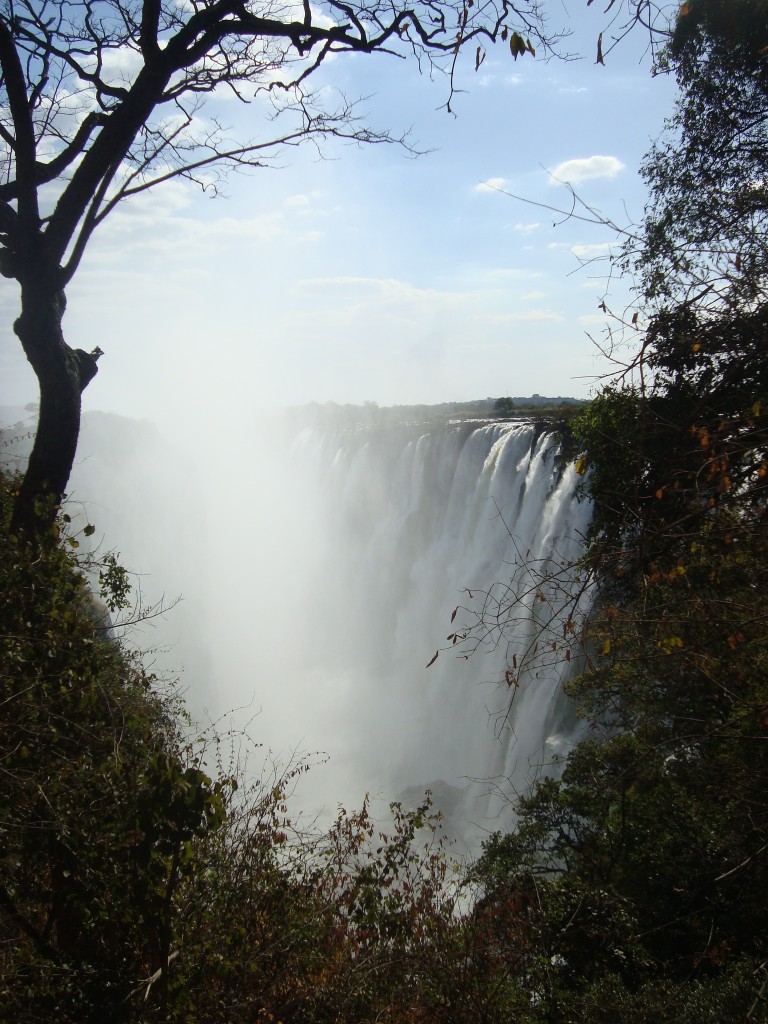
Kiting in Simonga
My last major stop was Simonga Village. Simonga is a growing village with around 3,000 residents. It has a partnership with Jollyboys and for a fee you can visit the village, eat lunch and be escorted by a resident. One of the fascinating things I learned was that the children here build their own kites from materials around the village.
They use discarded bags, create a string from empty bags of millet meal with a few twigs for stability to form their kite. After spending a day learning about the village, my tour guide showed me how to make one. I immediately felt like a kid again!
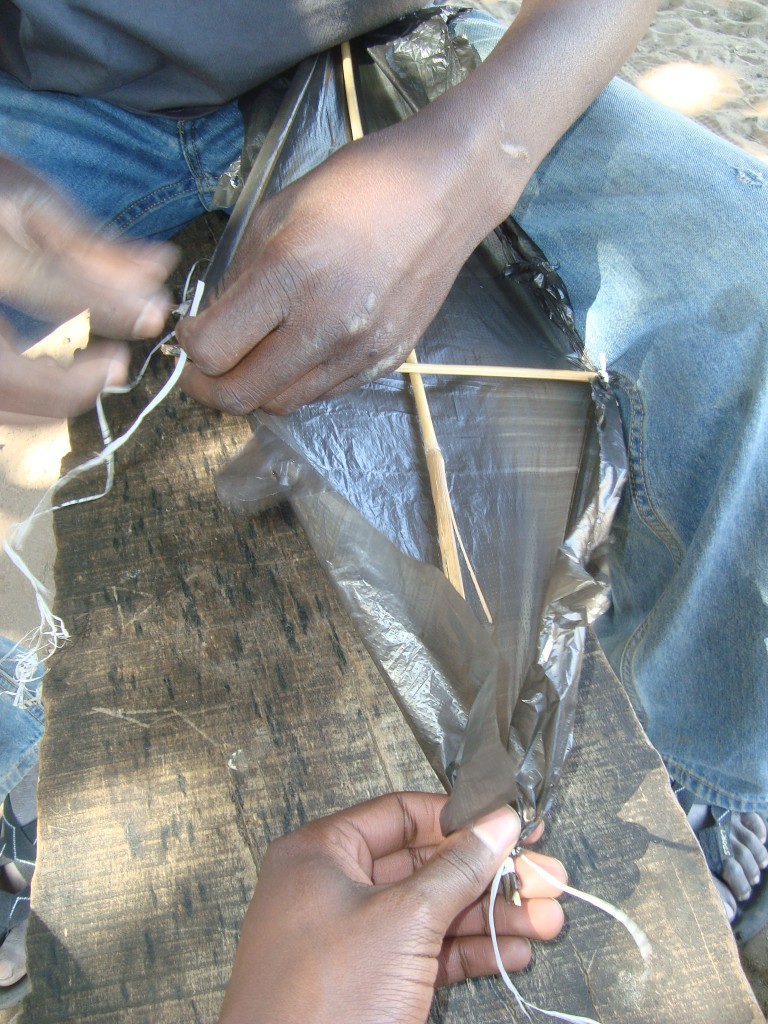
Perhaps the most exciting part about my few hours here was that I did everything on a limited budget of about 1,600 kwacha, which is around 300 USD. Much like crafting my own kite, finding excitement outside the usual expensive tourists activities simply takes a bit of creativity.

